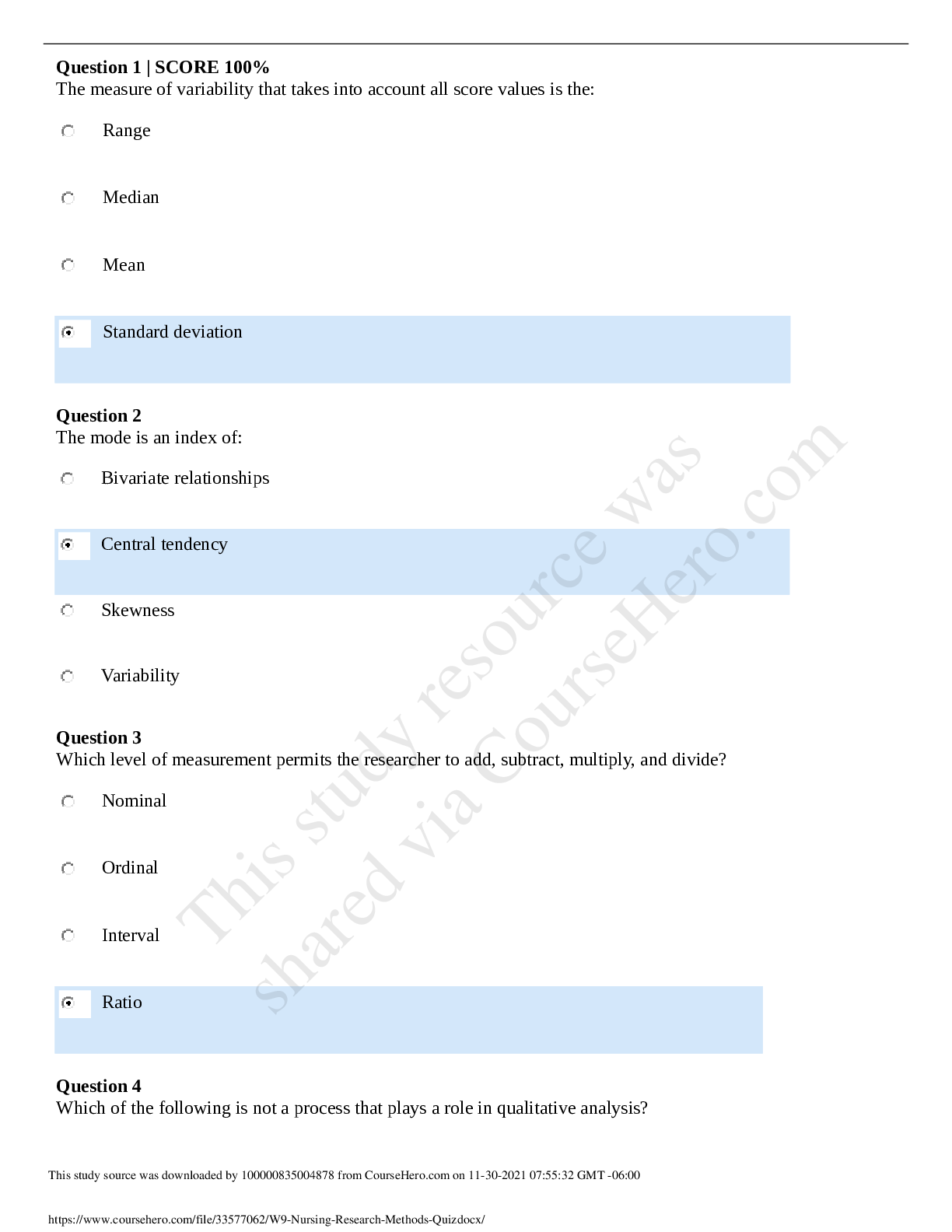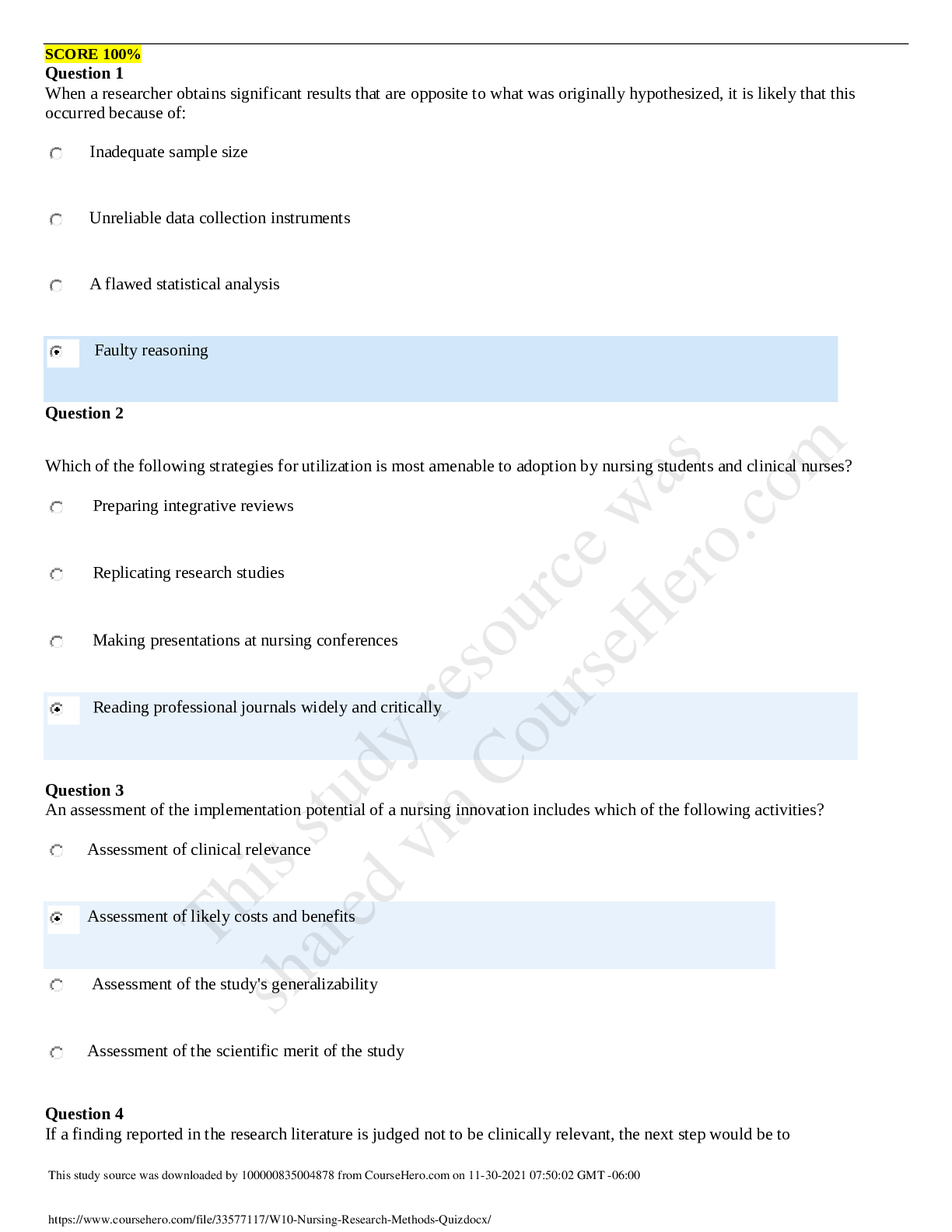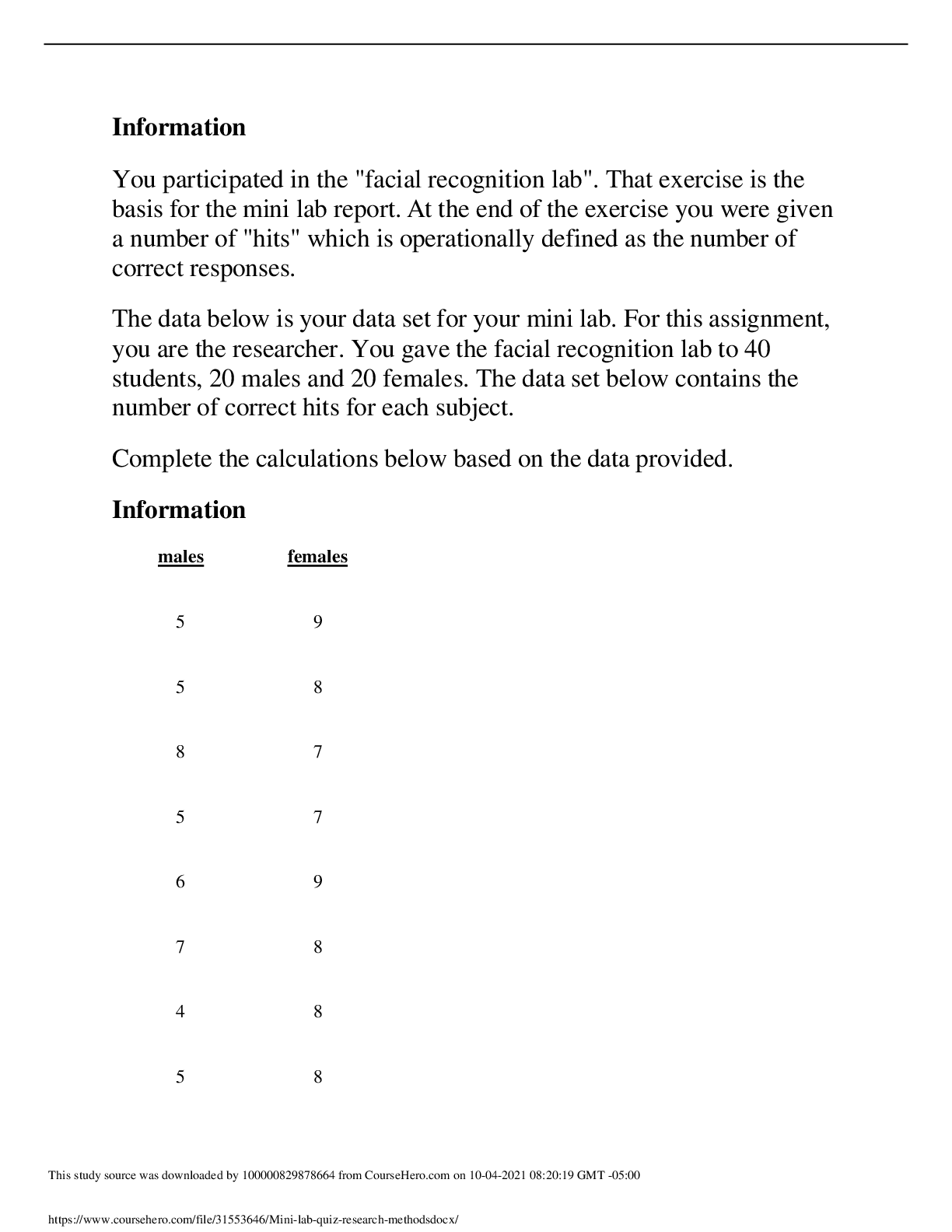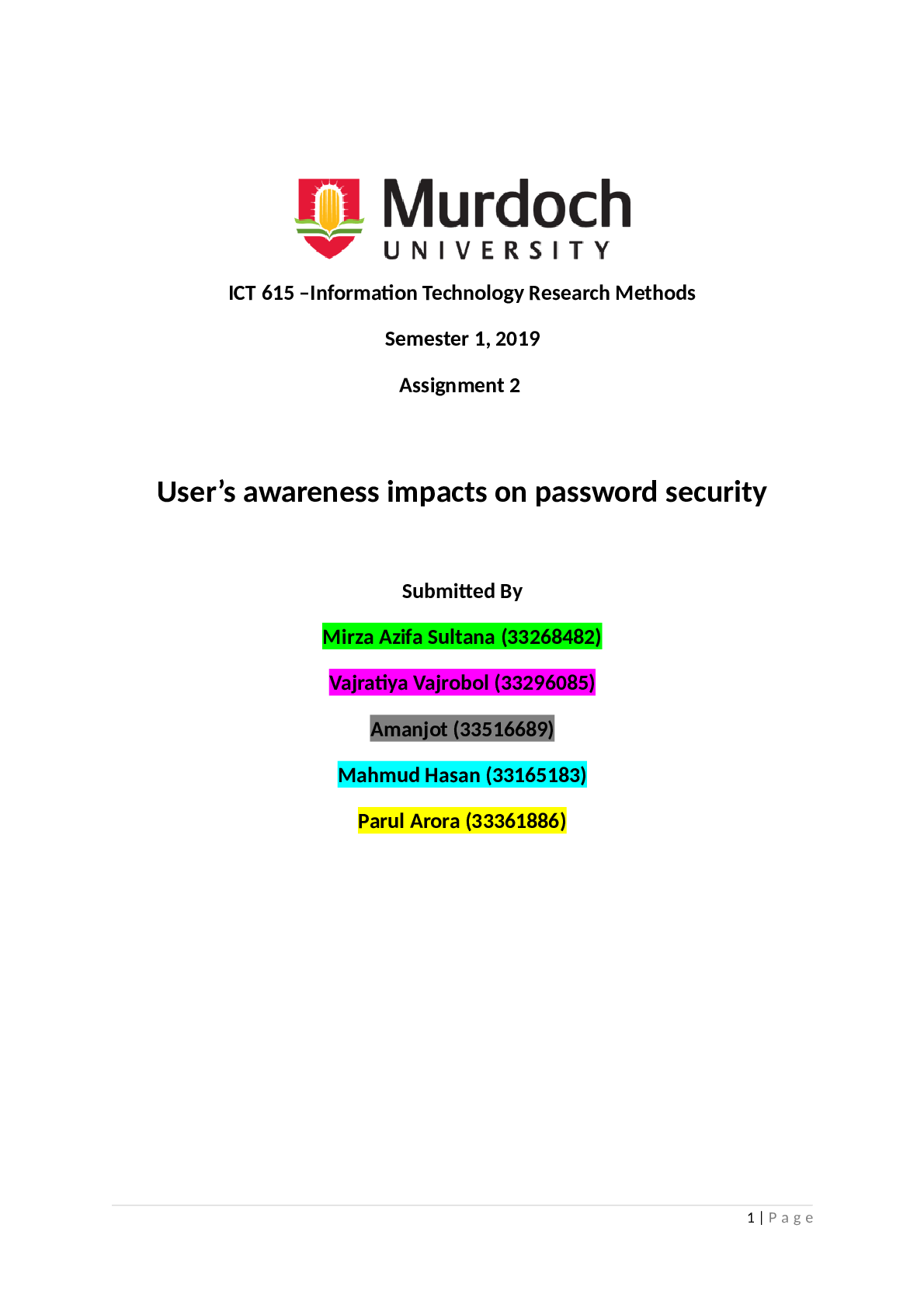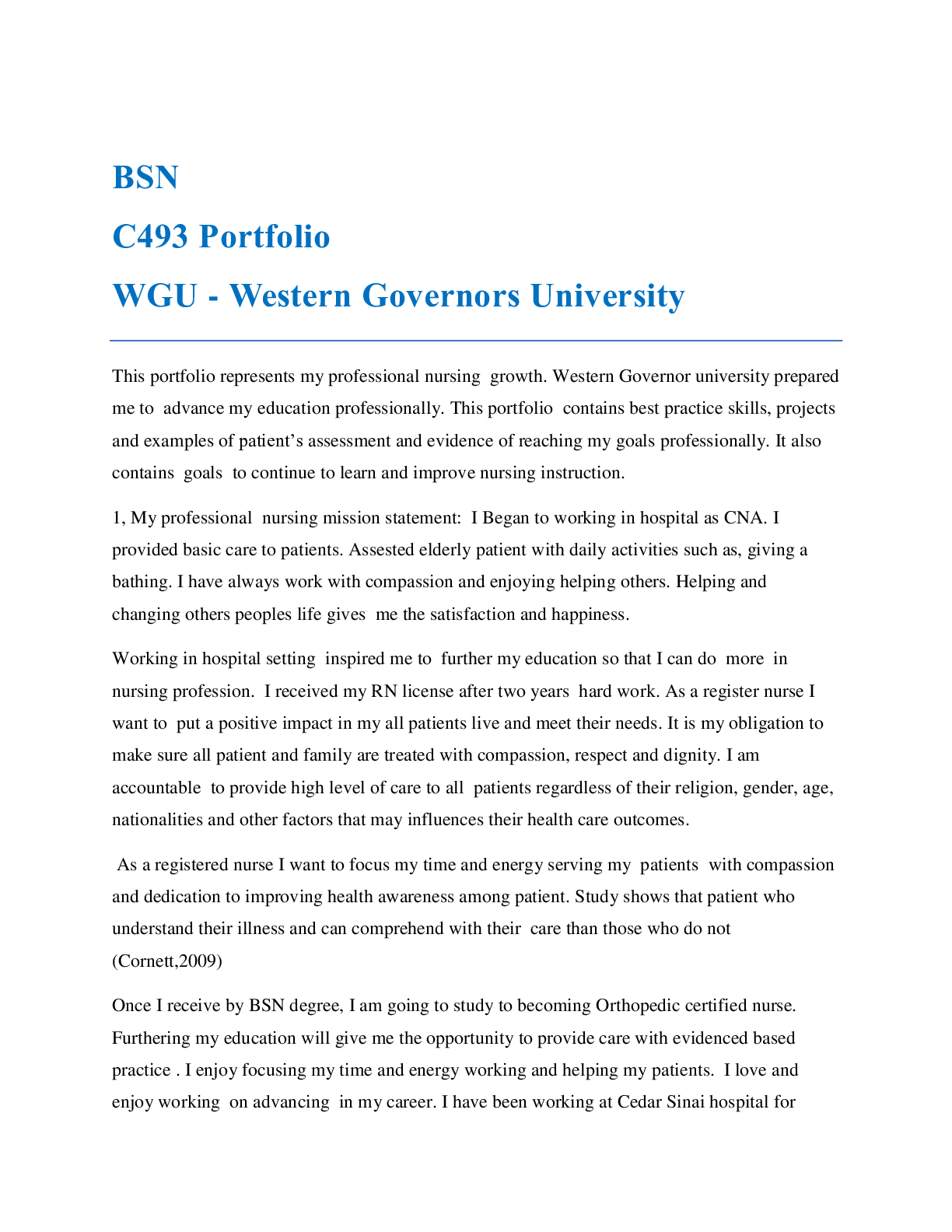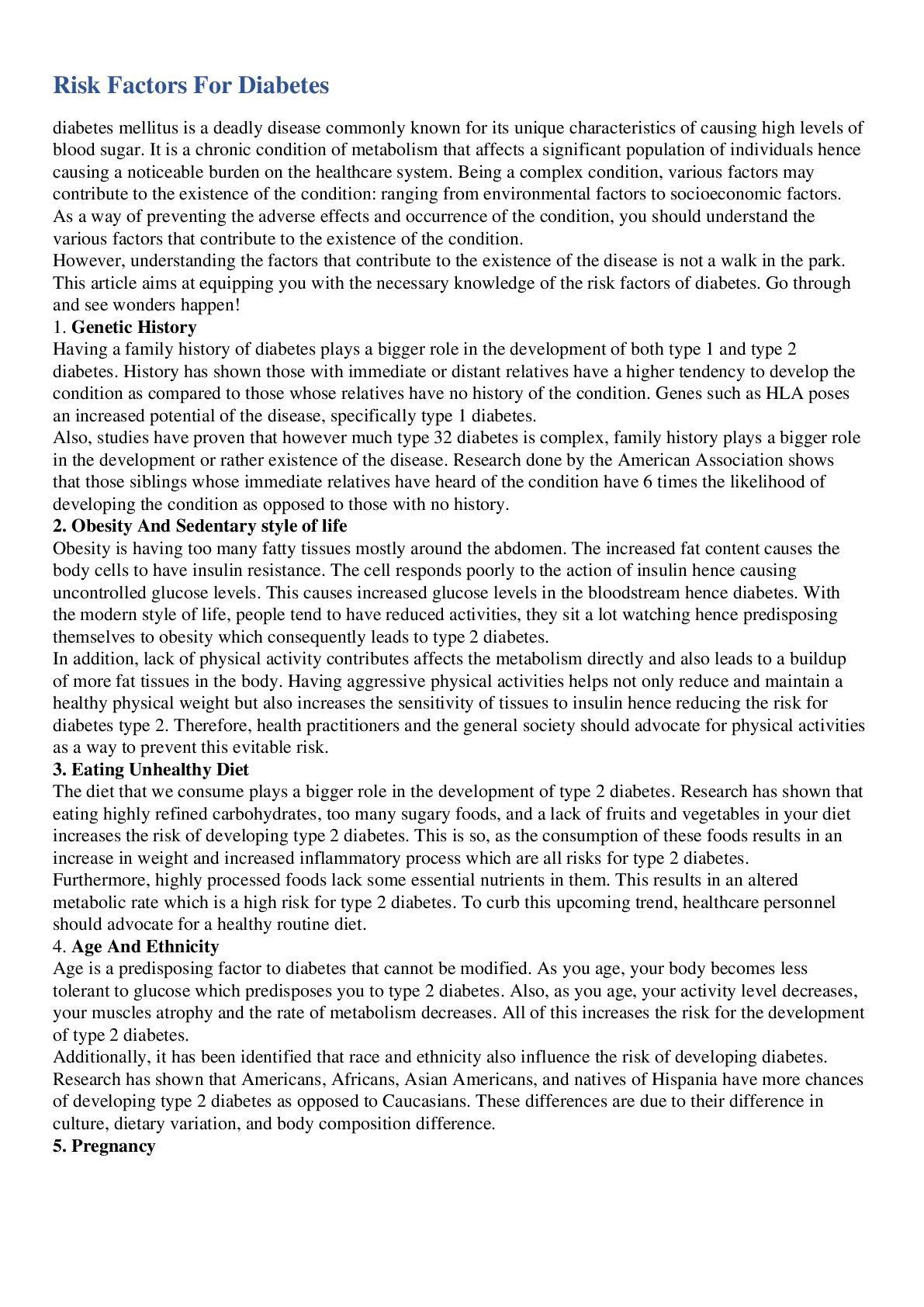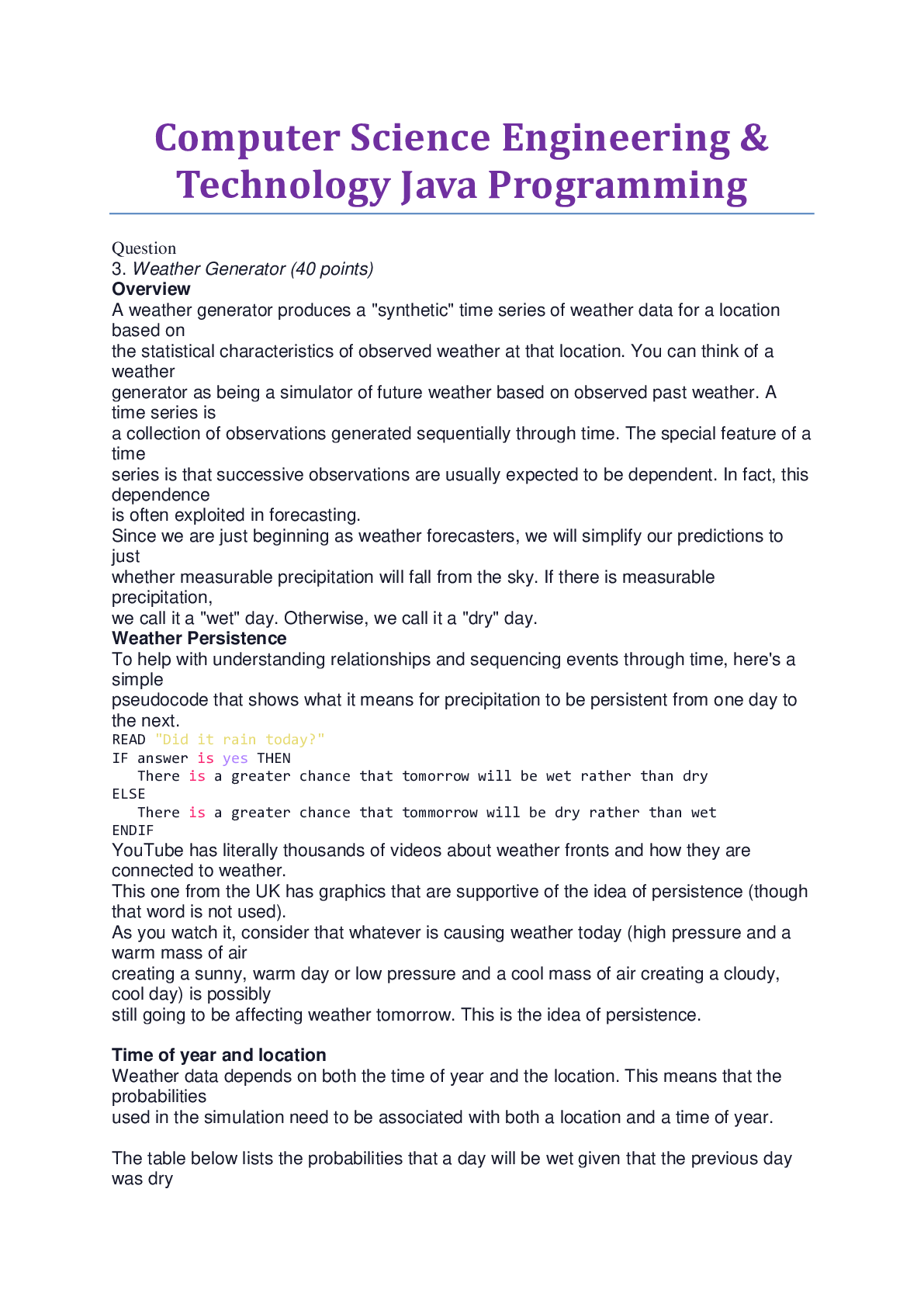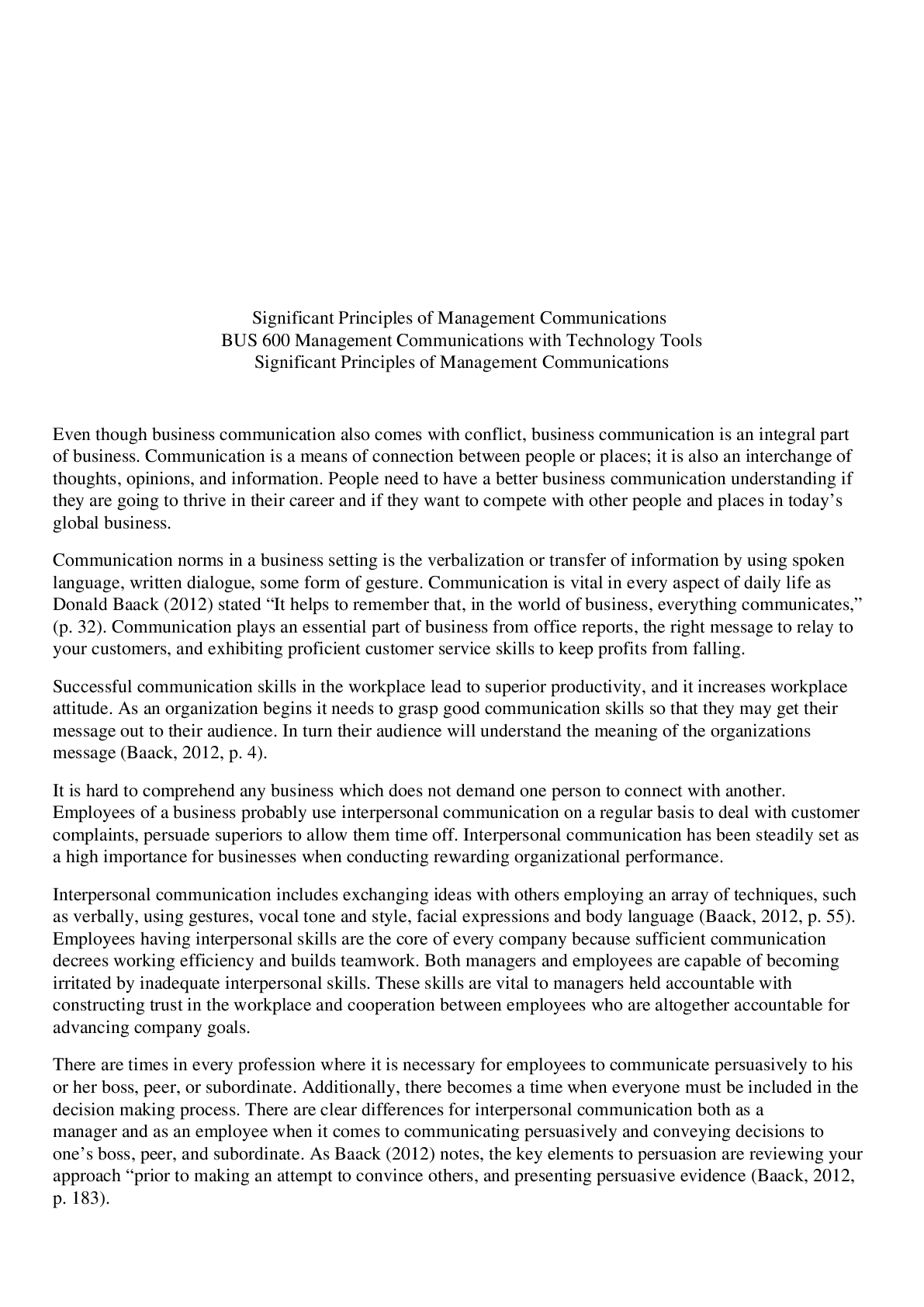*NURSING > Research Paper > NU560 8C Research Methods and Evidence Based Practice (All)
NU560 8C Research Methods and Evidence Based Practice
Document Content and Description Below
NU560 8C Research Methods and Evidence Based Practice Evidence-Based Practice Problem/Topic There are several things that help improve safety in the healthcare field. One of these things is the ... nurse-to-patient ratio. This is the number of patients that one nurse takes care of. This ratio can vary from the nurse specialty and what setting is being looked into in the healthcare field. The ratios can vary greatly from 1:1 patient ratio to 1:20 ratios in some settings. Significance Nurse-to-patient ratios are very important factor to look at in the health care field. As nurse-to-patient ratios increase the time a nurse has with a patient decrease. It has been shown that improved outcomes, fewer complications, fewer adverse events, and fewer hospital readmissions come with appropriate nurse-to-patient ratios. They have also been shown to benefit the staff. Having appropriate ratios can help with job dissatisfactions, burnout, and stress for the nurses as it can reduce the amount of workload placed onto them. Nurse-to-patient ratios typically shouldn’t go over 1:5, and in acute care the ratio should be lower as it should be closer to 1:2 or 1:3. In a lot of hospitals however, the ratios can be closer to 1:6 , 1:8, or even more during the night shift. This has led to unsafe and stressful conditions at work for nurses and is one of the causes that many nurses leave the field within a few years of working in it. With higher nurse-to-patient ratios it also leads to burn out of nurses. This problem leads to more issues. Burnout is defined by disengagement and lead to detachment and dulled emotions (University of St. Augustine for Health Sciences, 2020). This in result can lead to nurses becoming resentful toward patients, other nurses and even the people at home. Patients also face troubles when the nurse to patient ratio isn’t appropriate and is higher than necessary. Missed nursing care is one thing that was found to be strongly associated with a This study source was downloaded by 100000822447745 from CourseHero.com on 07-17-2022 16:17:08 GMT -05:00 https://www.coursehero.com/file/143611052/paper-1docx/3 higher ratio. Missed nursing care is a phenomenon of omission that happens when the correct action is delayed, partially completed, or can’t be done at all (PSNet, 2021). It has also been shown that the higher ratios compromise the ability for the nurse to provide safe, quality care to patients as the increase in patients eventually compromises their ability to do so. Increased risk of safety events, mortality, and morbidity are shown with the increase of the number of patients to a nurse. Other poor outcomes patients can face are increased medication errors, missed care, and delayed care. PICOT The PICOT question that was made in regard to nurse to patient ratios would compare a lowered ratio to a higher ratio in regards to patient safety and their healing. The PICOT components are as follows: Population- Patients in an emergency department; Intervention- lowered nurse to patient ratios; Comparison- higher nurse to patient ratios; Outcome- improve patient safety and healing; Time- in a six-month time period. In an emergency department, how does lowering the nurse to patient ratio to 1:3, compare to having a ratio of 1:4, help improve patient safety and healing, in a six month time period? Articles Three articles I selected that address the problem that’s the focus of my PICOT question include the following: The association between nurse staffing and omissions in nursing care: A systematic review; The association between nurse staffing and inpatient mortality: A shift level retrospective longitudinal study; and Hospital nurse staffing and patient outcomes. To find these three articles I utilized a few research strategies. One of them included using terms such as nurse-to-patient ratio, patient safety, emergency department, and patient outcome. I used both Google and Herzing’s library to find results for this assignment. I refined my search by selecting it to be narrowed to the past five years and being peer reviewed. Conclusion In conclusion, having appropriate nurse-to-patient ratios is an important practice to have in nursing. Lower ratios have been shown to improve patient outcome, readmission rates, and satisfaction. It has also shown to be beneficial to nurses as it increases job satisfaction and lowers the rate of burn out and stress. By lowering the nurse-to-patient ratio, patient safety and outcomes can be improved, medical errors can be avoided along with other adverse events, and nurses can carry out their work with less stress and with optimal support. [Show More]
Last updated: 1 year ago
Preview 1 out of 5 pages

Reviews( 0 )
Document information
Connected school, study & course
About the document
Uploaded On
Feb 04, 2023
Number of pages
5
Written in
Additional information
This document has been written for:
Uploaded
Feb 04, 2023
Downloads
0
Views
84



